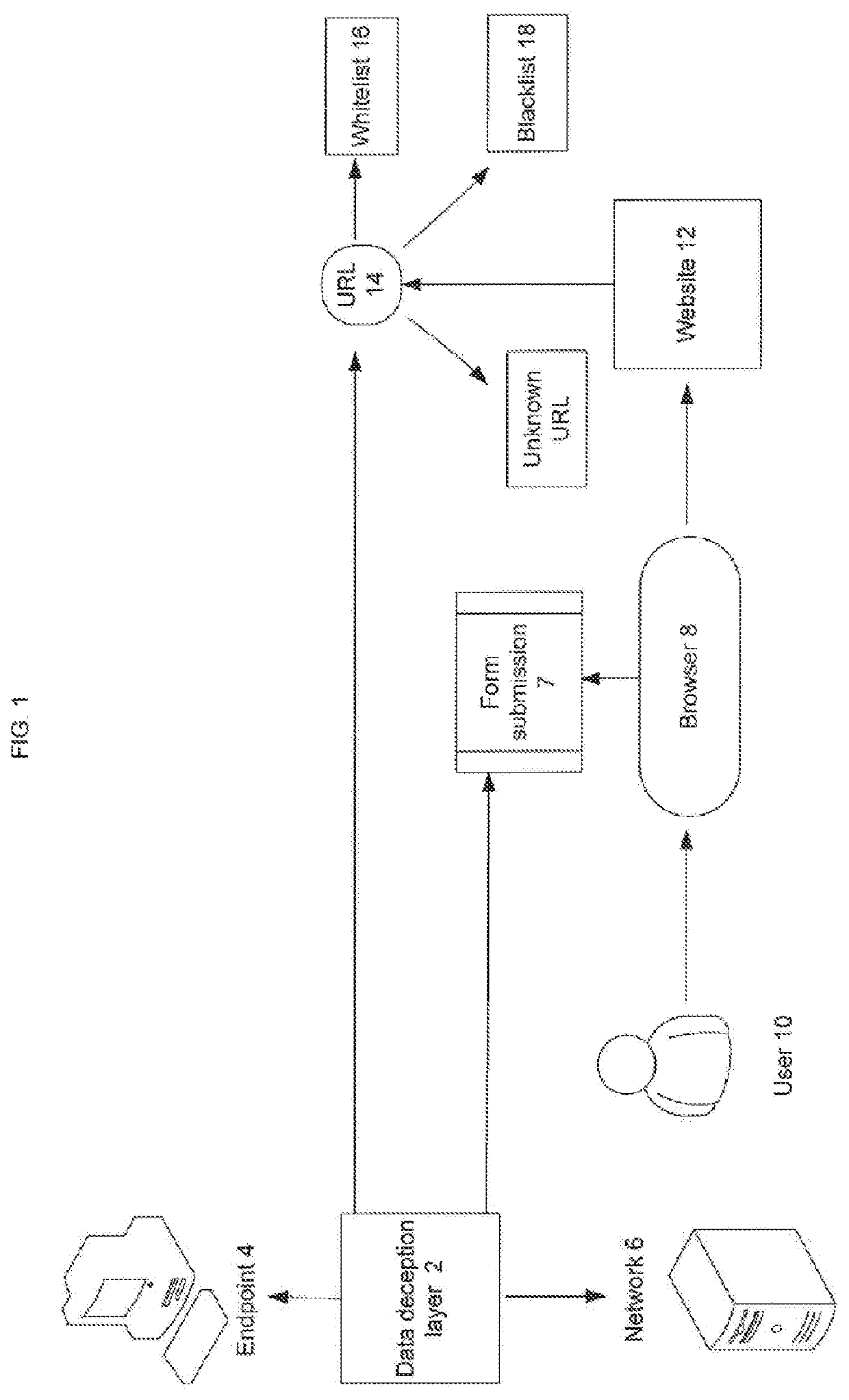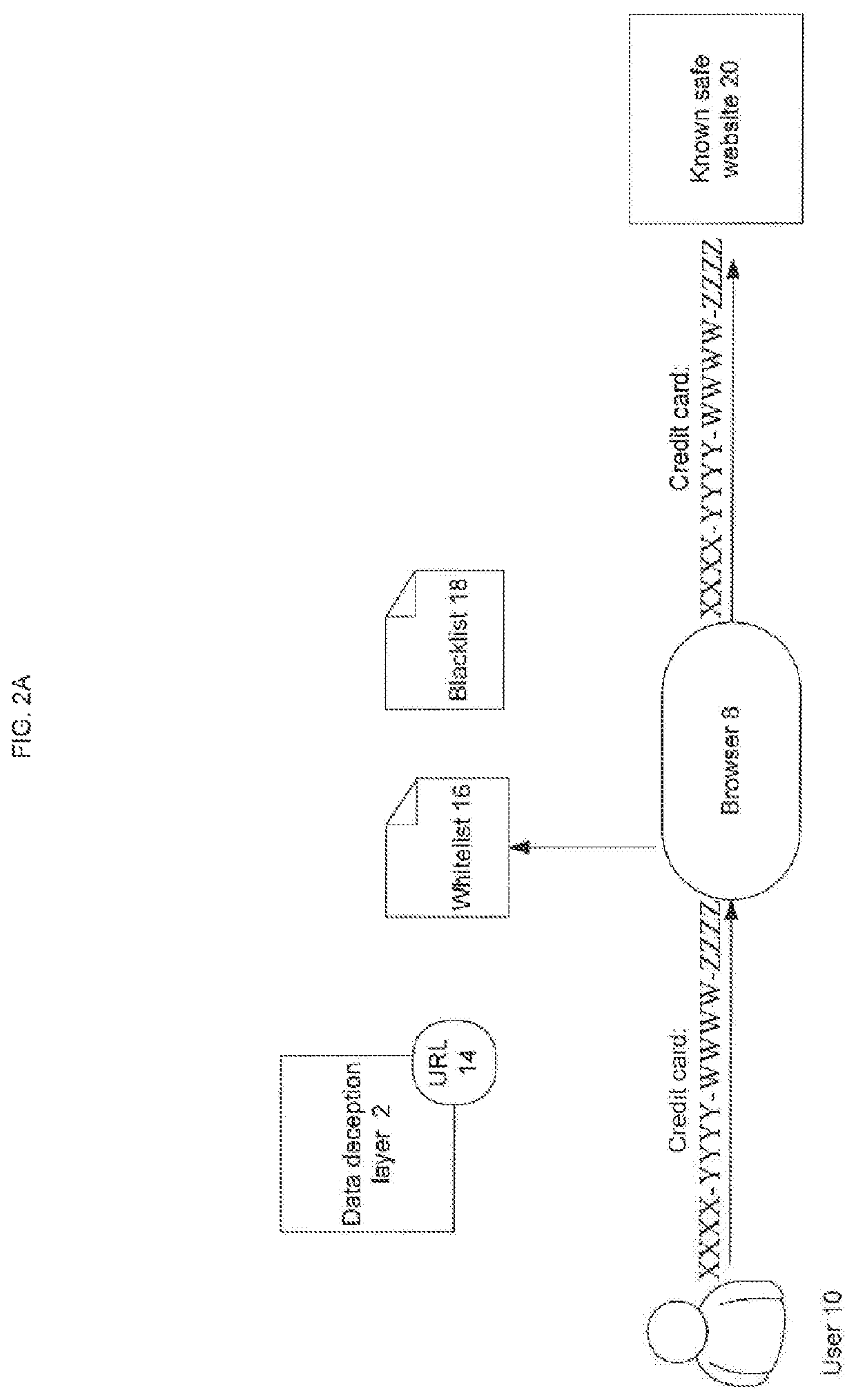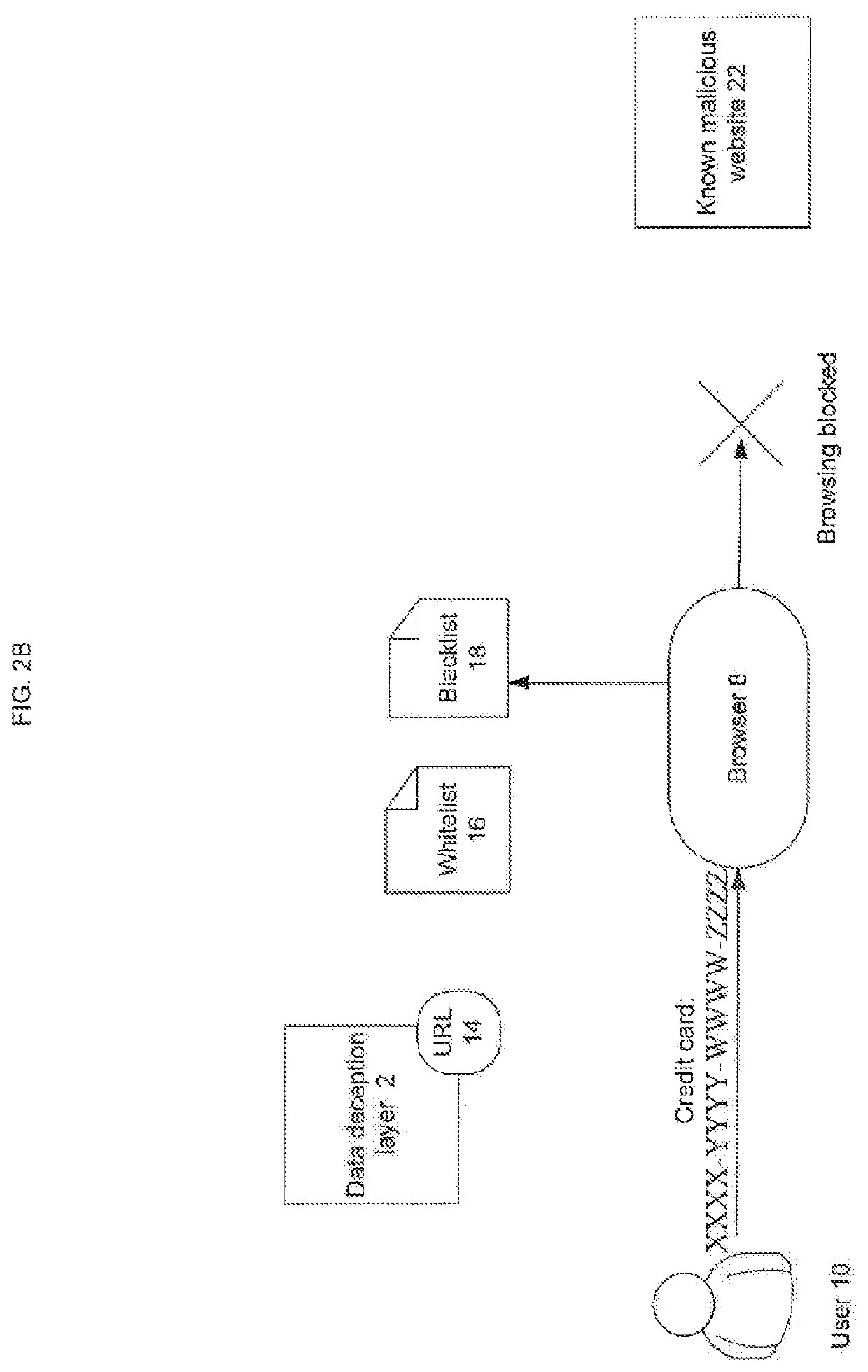Method to eliminate data theft through a phishing website
a data theft and website technology, applied in the field of data theft elimination through a phishing website, can solve the problems of system limitation and badly affected usability, and achieve the effects of eliminating data theft, eliminating data theft, and badly affecting usability
- Summary
- Abstract
- Description
- Claims
- Application Information
AI Technical Summary
Benefits of technology
Problems solved by technology
Method used
Image
Examples
Embodiment Construction
[0017]The current invention is a method of data deception to eliminate data-theft through a phishing website by introducing a layer of control between the user and the website to be visited.
[0018]FIG. 1 shows depiction of general scheme of the invention method. There is a system or data deception layer 2 that is deployed on endpoint 4 or on network 6 and tracks form submission activity 7 of the browser 8 that the user 10 is initiating. When user 10 visits a website 12 through the browser 8, the URL 14 visited is checked within the data deception layer 2. This layer 2 may utilize whitelist 16 and blacklist 18 together in order to ease the process and focus only on unknown URLs not found in any of the lists. The whitelist 16 and blacklist 18 are located at either a server or local endpoint, or both. The layer 2 may return three different possible values: URL 14 is in whitelist 16, URL 14 is in blacklist 18 or URL 14 is in neither of the list or unknown.
[0019]FIG. 2A and FIG. 2B show d...
PUM
 Login to View More
Login to View More Abstract
Description
Claims
Application Information
 Login to View More
Login to View More - R&D
- Intellectual Property
- Life Sciences
- Materials
- Tech Scout
- Unparalleled Data Quality
- Higher Quality Content
- 60% Fewer Hallucinations
Browse by: Latest US Patents, China's latest patents, Technical Efficacy Thesaurus, Application Domain, Technology Topic, Popular Technical Reports.
© 2025 PatSnap. All rights reserved.Legal|Privacy policy|Modern Slavery Act Transparency Statement|Sitemap|About US| Contact US: help@patsnap.com



